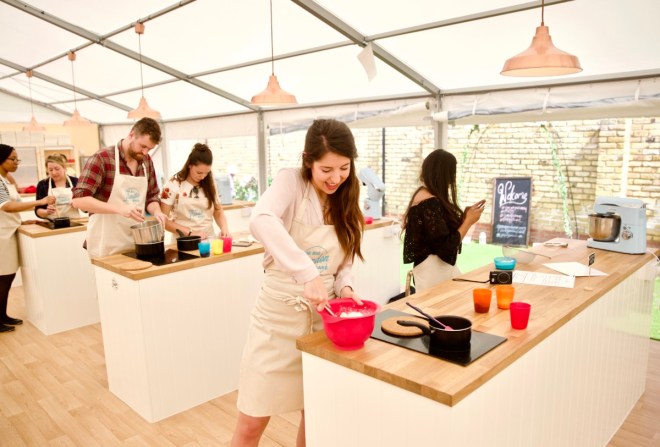Summertime opens up a whole host of fresh opportunities in the city. Outdoor strolls around London’s parks, gardens and markets are de rigueur throughout the season, but summer also brings with it plenty of exceptional but short-lived events. Catch the ones below before they’re gone!
Visit Buckingham Palace’s State Rooms
22 July to 1 October

Year round, crowds flock to admire Buckingham Palace’s beautiful façade, but it’s only in late summer that you can explore some of its exquisite interior too. The State Rooms – those rooms designated for the Queen to receive and entertain subjects and visiting dignitaries – are open from July to October, and with a Royal Day Out ticket you can gain access to the Queen’s Gallery and the Royal Mews too.
The Throne Room is a particular highlight; in recent times it’s perhaps most famous as the setting of several official photographs from the wedding of The Duke and Duchess of Cambridge.
Europea’s Westminster Residence is a short walk from Buckingham Palace.
Make DIY Ice Cream At Pierre Marcolini
1 June to end of August

Give summer ice cream a gourmet, personalised twist over at the Esquimau Choc Ice Bar at the Pierre Marcolini boutique on Marylebone High Street. Select from four ice cream (or two sorbet) flavours and then choose from six luxurious chocolate toppings to round it off (including smoked dark chocolate, milk chocolate with toasted hazelnut and fleur de sel or white chocolate and toasted coconut).
Experience Movie Magic At The Outdoor Cinema In Hyde Park
3, 4, 5 and 7 July

Hyde Park’s British Summer Time festival comes with more than just musical performances. They’re also hosting four free movie nights in July on a huge open air screen, and the line-up is a spectacular combination of family fun (a sing-along of The Lion King and two of Disney’s sensational live-action remakes – 2016’s The Jungle Book and this year’s Beauty and the Beast) and grown-up modern classics (including Dirty Dancing and Back to the Future). See the schedule here – entry is on a first-come-first-served basis, so be sure to arrive early!
Europea’s Kinnerton and Kensington residences both border Hyde Park.
Channel Your Inner Patissier At The Big London Bake
Until 1 October

The Great British Bake Off has practically become a national institution since first gracing British TVs back in 2010. (These days it’s even gaining in popularity across the pond as The Great British Baking Show.) Whether you have a penchant for cake, pastry and all things baking or are just a fan of the series, snap up the opportunity to take on a baking challenge yourself at The Big London Bake. Set in a marquee kitchen, contestants take part in the competition in 10 teams of 2 with all ingredients provided and a professional baker on hand. No experience required!
Go On A Sensory Journey At Somerset House’s Perfume Exhibition
21 June to 17 September

If you’re a connoisseur of scent, you won’t want to miss Somerset House’s intriguing Perfume exhibition, which examines its perfumers’ modern and accessible approach to perfumery and celebrates their inspirations through visual, auditory and tactile displays. Visit one of the Perfume Lab Residencies (9 and 23 July) for a unique chance to learn more about the art and science of crafting a fragrance from an expert perfumer.
Europea’s Covent Garden residence is only a short distance from Somerset House.
Experience Theatre Anew At The Open Air Theatre At Regent’s Park And Immersive Ensemble’s The Great Gatsby
Open Theatre: schedule varies by production till September
The Great Gatsby runs till September

Swap the West End for Regent’s Park’s Open Air Theatre this summer, with productions including A Tale of Two Cities, Oliver Twist and the return of their 2016 sell-out (and award-winning) Jesus Christ Superstar.
For an alternative, but equally extraordinary, theatre experience, check out the Immersive Ensemble’s ‘heart-racing, immersive’ version of The Great Gatsby, held at a secret location. Don’t forget those dancing shoes!
Europea’s Primrose Hill residence is very close to Regent’s Park.









